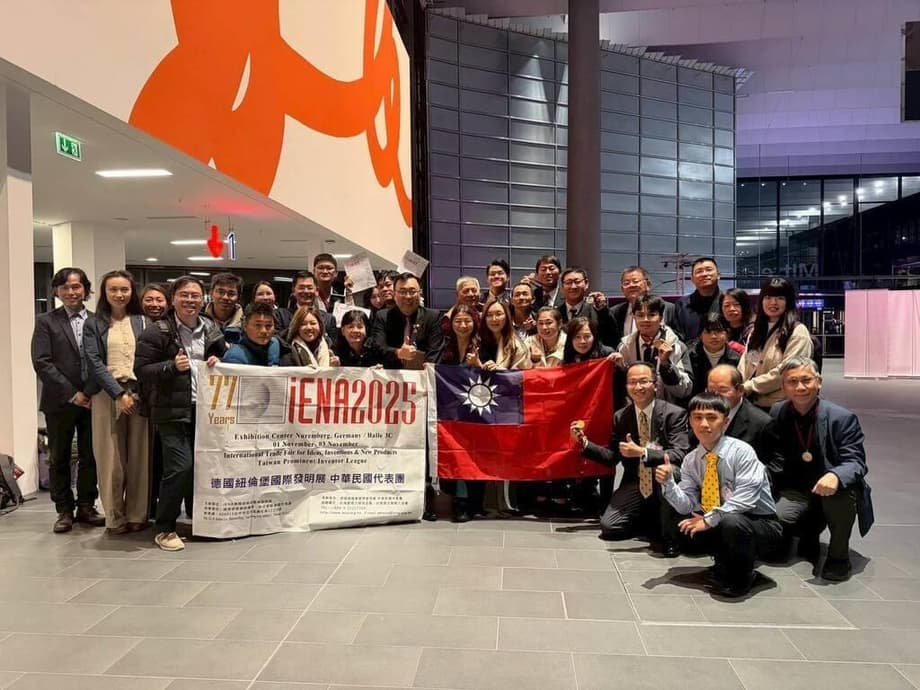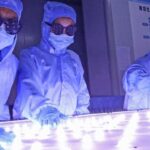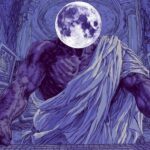A strong showing in Nuremberg
Taiwan’s delegation at the Inventors’ and Innovation Exhibition in Nuremberg (iENA) reported one of its best performances, securing 12 gold medals, seven silver, seven bronze, and a special award. The team blended youth talent and seasoned expertise, bringing together inventors from five junior and senior high schools, five colleges and universities, four firms, and four freelancers. The collection of wins highlighted a broad spectrum of ideas, from cultural applications enhanced by artificial intelligence to advances in biomedicine and materials science.
Among the standout entries were two devices from feng shui practitioner Lee Shang-yu, who received one gold, one bronze, and a special award from Germany. Lee’s systems analyze a chosen site using satellite maps and AI to identify nearby buildings, roads, and water flows, then compute an energy field strength index that the designer says reflects habitability. The approach attempts to translate principles from geomancy into a consistent screening tool, replacing methods often dependent on experience and personal judgment.
This year’s iENA marked its 77th edition, held from Nov. 1 to 3, and drew about 540 entries from roughly 30 countries. The fair is regarded as one of the leading venues where inventors present prototypes and early stage products, seek partners, and gather feedback from juries and peers across borders.
What is iENA and why it matters
iENA is a long running showcase where independent creators, academic labs, and companies introduce prototypes to an international audience that includes industry scouts, investors, patent professionals, and public sector representatives. Exhibitors compete for medals and special awards, but many also use the event to test market interest, identify manufacturing partners, explore licensing, and gather jury feedback that can shape the next iteration of their designs.
How the fair works for inventors
Exhibitors typically arrive with working prototypes, patent filings or plans, and concise value propositions. Juries consider novelty, potential usefulness, technical merit, presentation quality, and prospects for commercialization. Medals and special commendations serve as signals to potential partners. For teams from smaller markets, the fair is also a chance to gain visibility beyond their home country and to compare solutions with peers from Europe and other regions. The outcome often informs strategy for patenting, regulatory pathways, and pilot projects.
Inside Taiwan’s medal haul
According to Taiwan’s delegation, the medal count was spread across a variety of fields, reflecting the country’s growing depth in applied engineering, data driven tools, and healthcare technologies. The lineup spanned student teams to established research groups, and also featured individual inventors and private firms that used iENA to reach international buyers and technical partners.
Lee’s two geomancy related devices drew attention because they attempt to formalize a traditional practice through AI and satellite imagery. One device acts as an orientation aid based on remote geomancy, while the other estimates energy field intensity for a specific location. After a user enters a site, the system automatically identifies structural features and watercourses visible from mapping data and then calculates an index that the inventor proposes as a guide to habitability. The jury’s recognition indicated interest in the concept of cultural methods expressed through modern computation.
AI meets feng shui
From a technical perspective, such tools likely rely on computer vision to parse satellite images, geographic information system logic to model proximity and flow, and algorithms that turn these inputs into a single score. Any rating system of this kind depends on how the model is designed, including the weight given to specific features and the training data that informed those choices. The method aims to offer a repeatable checklist rather than a subjective inspection, which is attractive to planners and homeowners who want a consistent screen before a purchase or design.
The jury’s written feedback referenced the integration of cultural practice with data driven analysis. As the iENA jury noted:
“The devices were innovative and showed cultural integration, opening up new applications for scientific feng shui.”
This endorsement reflects growing interest in frameworks that blend heritage with quantifiable indicators. The debate around feng shui’s scientific basis is longstanding. Supporters argue that some traditional guidelines reflect practical site selection heuristics, such as the value of sun exposure, wind shielding, water management, and the interior orientation of spaces. Skeptics caution that predictive claims about energy flows must be validated. That is where modern mapping data and transparent algorithms could help, by testing whether the derived scores correlate with outcomes people care about, such as comfort, noise exposure, access, air circulation, or resale value.
Universities and firms step into the spotlight
Beyond the cultural tech crossover, several Taiwanese academic groups reported strong results. Chung Yuan Christian University stated that its Department of Biomedical Engineering won gold for a Visualized Nano Microscope that enables nanoscale imaging of live cells. The university also reported two bronze medals for its Department of Chemical Engineering, covering biomaterial and aerogel innovations, and a Best Innovation Award from a partner organization for advanced battery materials research led by Prof. Wei-Jen Liu.
A microscope capable of imaging live cells near the nanoscale suggests a push toward capturing dynamic cellular processes with greater clarity. Conventional optical microscopes face a fundamental diffraction limit. Researchers have developed techniques that extend resolution through specialized optics, fluorescent labeling strategies, and computational reconstruction. Any platform that maintains cell viability while approaching nanoscale clarity can accelerate studies of cell structures, drug responses, and membrane dynamics. If the system is also easier to use or more affordable than current tools, it can broaden access for labs that do not have high end instruments.
The bronze recognized biomaterial and aerogel studies point to a parallel theme of materials engineering for medical and environmental uses. Biomaterials that interact safely with tissues can support wound healing, targeted drug delivery, or regenerative scaffolds. Aerogels, which combine extreme porosity with low density, can offer high surface area for filtration, thermal insulation, or catalysis. These lines of work often rely on reproducible synthesis methods and consistent pore and surface character, both of which matter for scaling to production.
The additional award for advanced battery materials reflects a steady push to improve energy density, stability, and charge rates. Novel cathodes, solid electrolytes, or interface treatments can reduce degradation and enhance safety. iENA provides a place to benchmark such ideas against international peers, and to find links with manufacturers who can test performance under real world cycling conditions.
What judges tend to look for
Judging at invention fairs commonly centers on five questions. Is the concept original in a meaningful way. Does it address a real need. Is the solution technically sound. Can it be produced reliably at scale. Can the team explain the idea clearly to non-specialists. Models or prototypes that show the core function are persuasive. Patent filings or clear freedom to operate can improve prospects for partnerships. A concise plan for regulatory steps and early customers gives juries confidence that the project can leave the lab.
For tools that rely on AI, juries often ask about data sources, model explainability, and pathways to validate predictions. In health and safety categories, teams may be pressed on risk management and plans for independent testing. Design clarity, user interface, and documentation quality all influence outcomes. Medals help attract attention on the exhibition floor, but the conversations at the booth, the contact lists built over three days, and the follow up in the months after the fair often determine long term success.
Special commendations in 2025
Lee’s dual recognition, a gold and a bronze plus a special award from Germany, stood out in this context. The fair also named Thuringia as a partner of iENA 2025, drawing together research institutes and networks in the German state to support inventors. Partner organizations often provide coaching, legal guidance, and local showcases that can speed the move from prototype to contract. The mix of medals and partner support underscores the fair’s role as a bridge between creativity and practical collaboration.
Cultural heritage meets applied science
Many aspects of site selection and building orientation that show up in cultural practices can be evaluated with measurable proxies. Daylight exposure depends on latitude, aspect, and surrounding structures. Wind patterns and terrain influence ventilation and noise travel. Nearby traffic, rivers, and drainages affect safety, access, and flood risk. Algorithms built on satellite imagery, maps, and open data can score these factors consistently, which can help homeowners and planners compare options without resorting to guesswork.
Claims about energy fields require careful language and disciplined testing. A constructive approach is to separate mystical claims from environmental variables that correlate with measurable outcomes. If an index can be decomposed into transparent components, researchers can test each one. For example, do higher scores align with lower noise exposure, better air flows, or improved walkability. If the answer is yes, users get a practical tool for screening sites. If not, teams can adjust the model or reposition the product as a preference guide rather than a predictor. The iENA feedback indicates interest in methods that respect cultural contexts while still grounding decisions in data.
What comes next for Taiwan’s iENA team
For medal winners, the weeks after Nuremberg are critical. Teams typically close on patent filings in priority markets, begin limited pilots with early adopters, and refine documentation requested by investors or potential licensees. For AI tools, validation studies and user experience testing help build trust. For devices headed toward medical or industrial use, standards compliance and safety testing move to the top of the list.
Taiwan’s innovation ecosystem includes regular showcases and sector focused events where follow up meetings can convert international interest into contracts. Exhibitions recognized by international inventor associations provide additional chances to meet buyers and research partners. Student teams often return to campus labs with juror feedback that shapes graduation projects and new startups. The medal haul in Nuremberg gives these teams a talking point with potential funders and a platform to pursue trials with local governments, builders, and manufacturers.
Key Points
- Taiwan’s team at iENA 2025 reported 12 gold, seven silver, and seven bronze medals, plus a special award.
- Inventors came from five high schools, five universities, four firms, and four freelancers, showing broad participation.
- Feng shui practitioner Lee Shang-yu won a gold, a bronze, and a special German award for two AI based geomancy devices.
- Lee’s systems analyze satellite maps to identify buildings, roads, and water flows, then compute a habitability index.
- The iENA jury praised the devices for cultural integration and potential new uses for scientific feng shui.
- Chung Yuan Christian University reported a gold for a Visualized Nano Microscope and additional awards in materials research.
- iENA’s 77th edition ran from Nov. 1 to 3 and drew about 540 entries from roughly 30 countries.
- Typical judging centers on novelty, usefulness, technical merit, scalability, clarity, and commercialization prospects.
- Thuringia partnered with iENA 2025, reflecting the fair’s links with regional innovation networks.
- Taiwan’s winners now focus on patent steps, pilots, and partner deals to turn medals into market traction.




